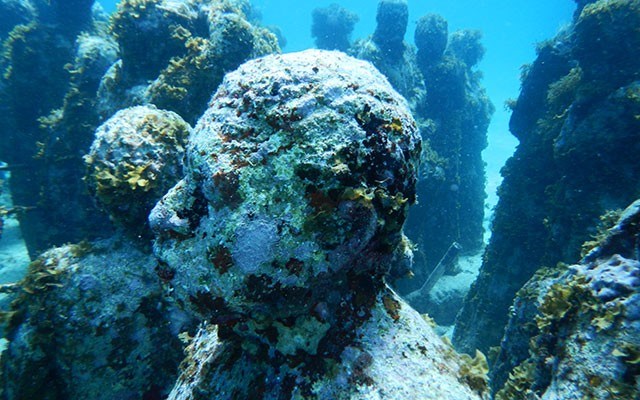A polka-dotted creature the size of a bus glided past me in tropical waters. I was surrounded by the largest living shark species on the planet. The spotted giants with wide-open mouths moved slowly, but were still faster than me. Time to cue JAWS music? No, more like Beethoven's "Ode to Joy."
I was enchanted with a delightful, unforgettable, literally immersive experience. The behemoths were peaceful, filter-feeders called "whale sharks," seeking the tiny plankton I couldn't see.
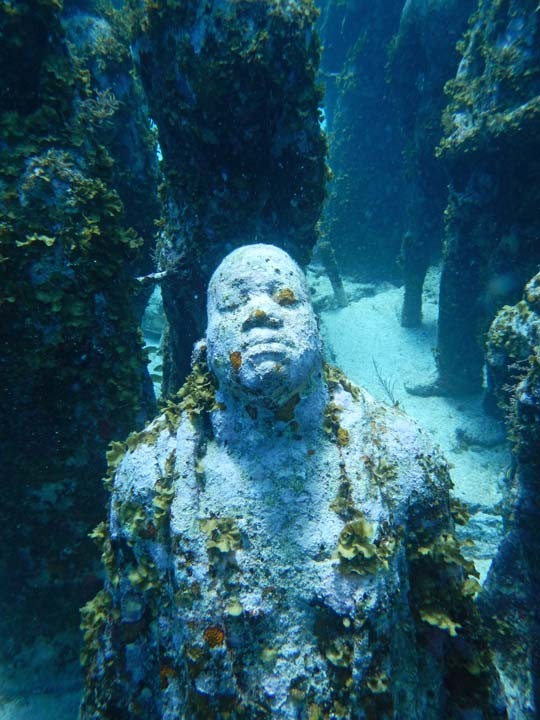
Whale sharks are a traveller's treasure off the shores of the tourist mecca of Cancun, Mexico. From June to September boats can take swimmers and snorkellers from their resorts to places where the gentle giants come annually to feed, usually off Isla Mujeres or Isla Holbox.
These unpretentious creatures rival dinosaurs in weight, and have been pegged as the very biggest non-mammal creatures with vertebrae on the planet. They are also numero uno on the chart of largest sharks, yet it's safe to snorkel with them.
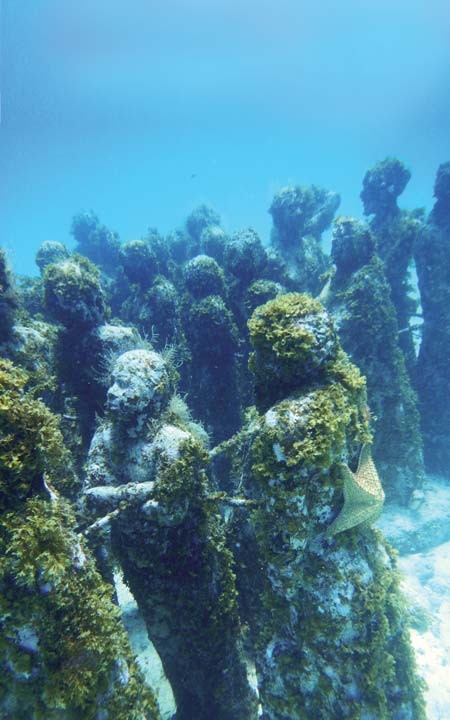
They don't have showy behavior like breaching humpbacks or spouting grey whales, but they often move slowly enough to track, and are fascinating to watch. Sometimes they carry hitchhiking fish called remora.
Watching remarkable animals close-up in their own realms, not caged, is one of life's great connecting experiences. Unlike seeing wildlife from inside a safari jeep out on a savannah, inside a shark cage in chummed waters, or through the barred windows on some bear-sighting trips, observing whale sharks can be an eye-to-eye experience. And their eyes seem disproportionately small to their impressive bodies as you float free, side-by-side, with nothing between you and the giants but water.
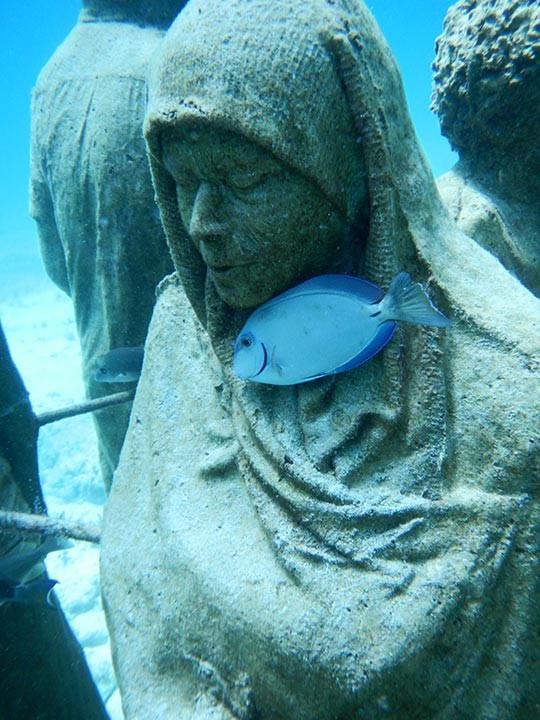
You don't have to be an Aqua Superhero to jump into nature's aquarium without walls. Snorkel vests can help your buoyancy and guides are available for extra help. The water temperatures range from 25 to 29 degrees celcius so you may want to wear a light skin or wetsuit depending on your comfort levels.
Make sure before you leave shore that you have the right size wetsuit, a snorkel mask that fits well and a good way to de-fog it, so you can forget about equipment and focus on the animals! (And, of course, if you have any doubts about your fitness level, check with your doctor.) For people who don't want to get wet, watching the whale sharks from the boat can also be a gratifying experience.
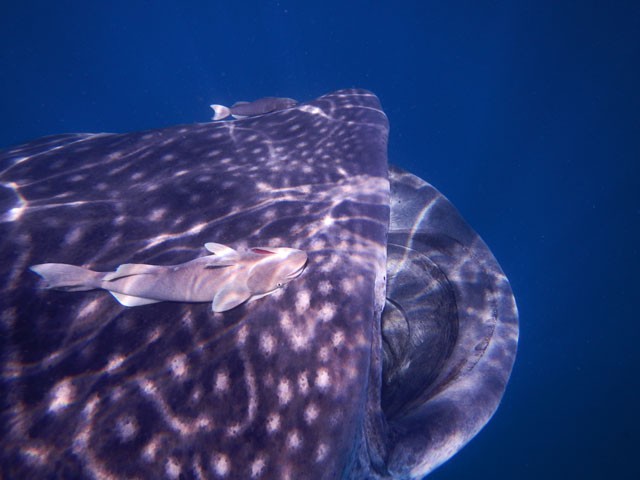
It can be worth losing a little sleep to arrange for an early boat that will find the spotted creatures that the locals sometimes call "pez dama" or domino before other vessels invade the scene. The number of snorkellers is regulated to limit the quantity of humans in the water, and it's important that you respect their habitat and don't touch them.
Unlike some peek wildlife experiences that are far removed from alternate tourist activities (shopping, restaurant hopping, spas, and sports,) these natural shark-feeding grounds are near Cancun, a destination designed for tourism. The city brags a resort row on white sandy beaches, huge blocks of shopping possibilities, a 40,000 square foot Gem Spa, and over 92,000 hotel rooms.
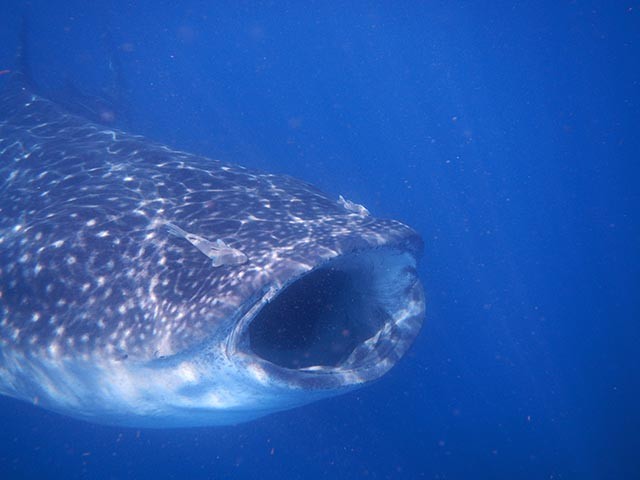
But Cancun didn't become Mexico's top tourist destination because of the sheer number of tropical sites for siestas, sun tans, and margaritas alone. Cancun is well positioned to be an enclave launch pad for day trips to see extraordinary Mayan ruins, to explore the cenote caves and wildlife in nearby jungles, to zipline along the canopy, and embark on other terrestrial adventures.
In addition to whale sharks, the waters off Cancun also offer part of the Western Hemisphere's largest reef — the Mesoamerican Barrier Reef – as well as creative, evolving mini-reefs in the world's biggest underwater sculpture park. Started in 2006, the undersea gallery of artist Jason de Caires Taylor is now home to over 500 sculptures depicting a captivating array of human emotions.
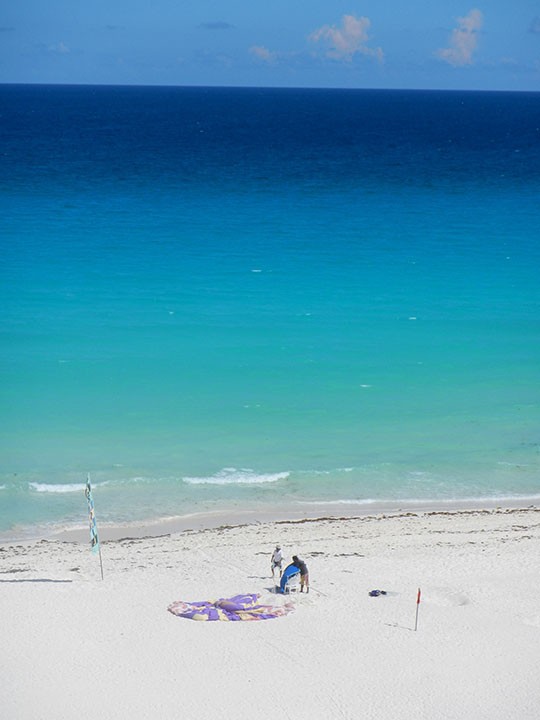
Snorkelling allows a topside view of tropical fish swimming among vignettes of humanity 4.5 to 9 metres below. I donned a scuba tank to swim among the statues, viewing faces that looked startlingly fresh and others eaten away with the ravages of time and sea. Some figures were doing the marine equivalent of "pushing up daises" — providing decay that creates life support for others — as new mini reefs forming food banks.
For 15 plus years, I have loved and covered what I call "underwater travel" and whale sharks and the sculptures are among the memorable highlights. I'd love to re-visit both the polka-dotted behemoths and the growing gallery as it continues to change. So when I re-surfaced into the bright sunlight, "hasta la vista" seemed the right refrain.
All photos by Lisa Sonne © — not to be used without permission.

